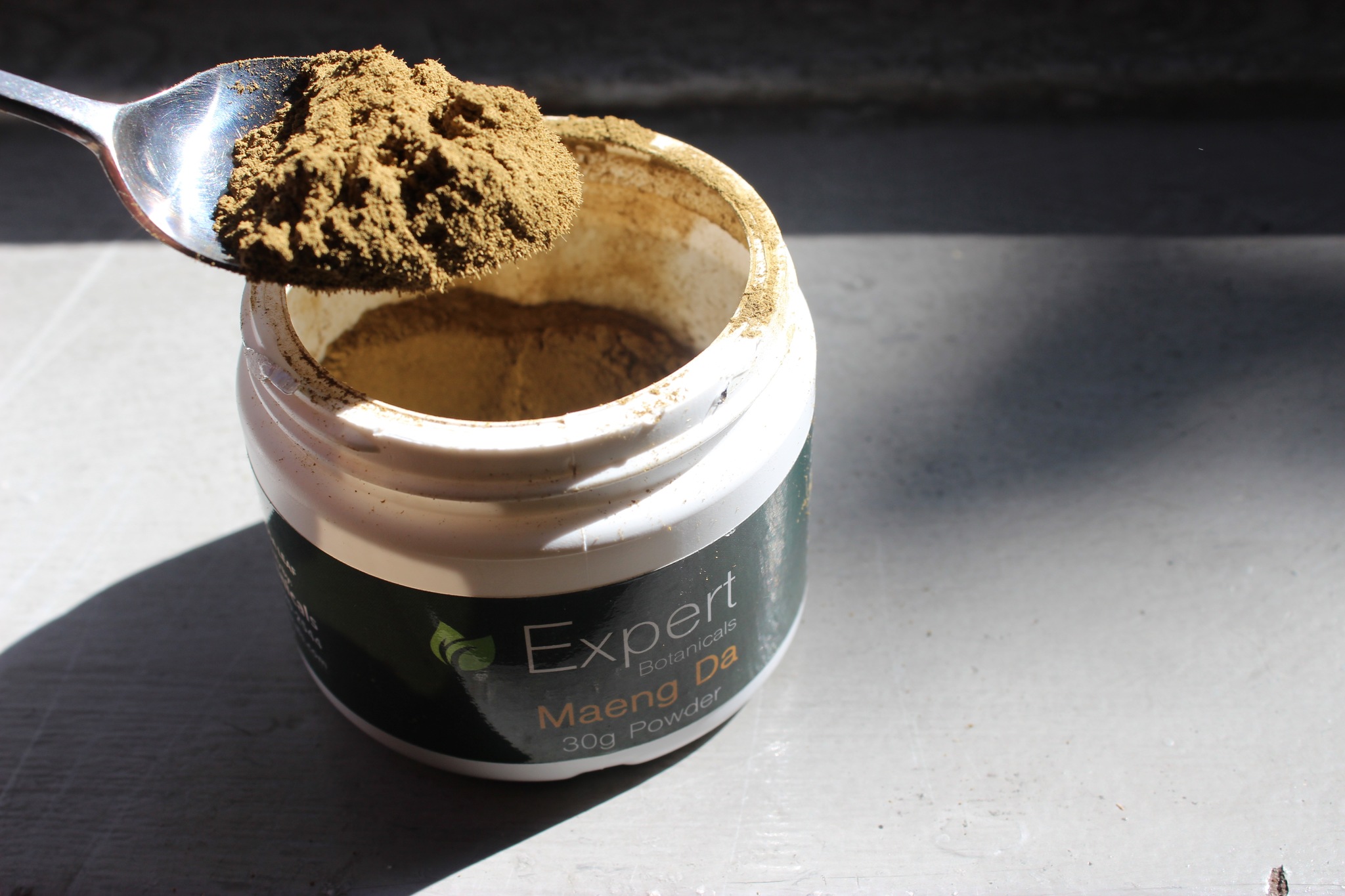Binh Nguyen started using opiate pain medications after his doctor wrote him a prescription to mute the piercing pain of an acute liver condition. The pills did help with the pain, and they also changed the way the world looked a bit—how it felt to be on opiates became how it felt to exist.
“It escalated from there,” says Nguyen of his addiction. Soon he was swallowing upward of five 30-mg Oxycodone pills a day and scrambling to keep up with his maintenance painkiller habit.
Nguyen’s life changed after a friend told him about a legal herb that the friend was using to kick his heroin addiction. The botanical-derived psychoactive substance, kratom, was legal and available for purchase around Seattle. It wasn’t so much that the effects were similar to those of opiates, but the herb kept withdrawal symptoms at bay and was a good, natural way to ease anxiety and feel a little energized, Nguyen says. More than a year later his mental state and quality of life have improved substantially, he says. He still takes kratom most mornings, but he doesn’t need it to get out of bed or make it to work.
Nguyen’s story isn’t unusual. Since kratom started appearing on the shelves of head shops in the U.S. around 2007, many have come to rely on the East Asian tree leaf to stay clean, curb chronic pain, or get through the day. But unfortunately for its adherents, and despite the lack of adverse effects, the botanical’s days as an accessible legal remedy in the United States will come to an end October 1.
On August 30, the DEA announced its intent to make the active components found in kratom leaves—mitragynine and 7-hydroxymitragynine—illegal “in order to avoid an imminent hazard to public safety.” The temporary move to Schedule I—the category of the Controlled Substances Act occupied by drugs believed to have high abuse potential and no medical value—is intended to allow time for an unregulated substance to be scheduled through formal rule-making procedures.
That, though, is of little comfort to people like Nguyen, who are already sold on kratom’s lifesaving effects.
Mitragyna speciosa, a deciduous tropical tree in the coffee family that is indigenous to Thailand, has been used to manage pain, enhance concentration, and replace opiates since the 1800s in Southeast Asia. In the U.S. its therapeutic benefits have yet to be formally established, though early research shows promise.
A paper published by Columbia University’s Dalibor Sames and Andrew Kruegel this summer in the Journal of the American Chemical Society demonstrated that kratom’s active ingredients activate the same receptors as does morphine. Research led by Susruta Majumdar at the Memorial Sloan-Kettering Cancer Center has been showing a kratom derivative’s potential as a building block for a safe and effective pain medication.
In Seattle, kratom abuse hasn’t showed up as so much as a blip in the numbers the UW’s Alcohol and Drug Abuse Institute gathers from area public-health and law-enforcement agencies. “We don’t have a sense of how many people use kratom in the Seattle area,” says ADAI research scientist Caleb Banta-Green. “We’ve only occasionally heard of anecdotal reports of use.” Banta-Green says kratom was involved in a fatal drug overdose in 2015, but oxycodone was also present in the victim’s systems.
While the presence of kratom in a drug overdose was a first for ADAI, the opiate wasn’t—a fact that underscores what many see as kratom’s positive role as acting like an over-the-counter treatment for opiate addiction. Banta-Green says the ADAI’s focus is on curbing our area’s rampant heroin use. In 2015 heroin caused 132 overdose deaths in King County and treatment admissions for the drug eclipsed admissions for alcohol, according to the ADAI’s annual drug-abuse trend report. Heroin use has increased as prescription pain pills have become harder to get; the American Society of Addiction Medicine says four of every five new heroin users in 2016 transitioned from abusing opioid pain pills.
Joe Salender just returned from this year’s Burning Man, where he shared kratom with many people who had never heard of the plant. “It was an amazing thing, but my overall vibe is kind of bummed,” he says. He’s stocked kratom at his Olive Way glassware shop, Holy Smoke, for seven years, and for much of that time he’s been watching with concern as some state governments rushed to regulate the plant. Kratom arrived from Southeast Asia hot on the heels of the notorious designer drug bath salts, and, in the wake of the wave of negative media coverage that followed, lawmakers in many states began to work to make the botanically derived psychoactive substance illegal. Its novel ability to help wean users from heroin didn’t help kratom’s reputation, either, Salender says; many people assumed that if kratom kept opiate withdrawals at bay, it also must be highly addictive.
User Aaron Farmer, who replaced coffee with kratom, says that’s not the case. He’s been drinking kratom tea daily for over a year, and says that when he’s taken a break, the withdrawals have been slightly less severe than those he experienced when he quit drinking coffee.
The DEA doesn’t necessarily disagree with that assessment. In a press release, the agency said 660 calls “related to kratom exposure” were made to poison-control centers between 2010 and 2015. Fifteen “kratom-related” deaths occurred between 2014 and 2016, the agency said. However, DEA public information officer Jodie Underwood clarified that the scheduling decision “is not to say or suggest that these active materials in the kratom plant are as dangerous as heroin or LSD or even other scheduled controlled substances—it simply means that the substances meet the statutory criteria as a Schedule I controlled substance.”
Holy Smoke reliably does several hundred dollars in kratom business daily, Salender says, and losing the staple product will cost him both sales and customers. And it will hurt more than his business, Salender says: “I feel it’ll affect a lot of people’s lives; people rely on kratom to live a clean lifestyle or to get pain relief.”
“There’s not justification to make kratom Schedule I or illegal—tobacco kills people, it has no purpose and it’s still sold, but kratom is being taken off market while dangerous things remain on the market—it doesn’t make sense,” says Salender.
Salender read about the ban in a Forbes article, and Underwood says that the agency doesn’t plan to go around notifying retailers that kratom’s active components will be illegal come October 1.
Nguyen hasn’t started worrying about where he’s going to get kratom once it’s pulled from shelves; he’s hoping it will remain available until the current stock is gone. When that happens, he’ll have to decide whether to give up the substance or seek it on the illicit market. He hopes he’ll never return to the pills kratom helped him kick, and says he’s sad others won’t have the opportunity to benefit from the tree’s assistance.
news@seattleweekly.com






